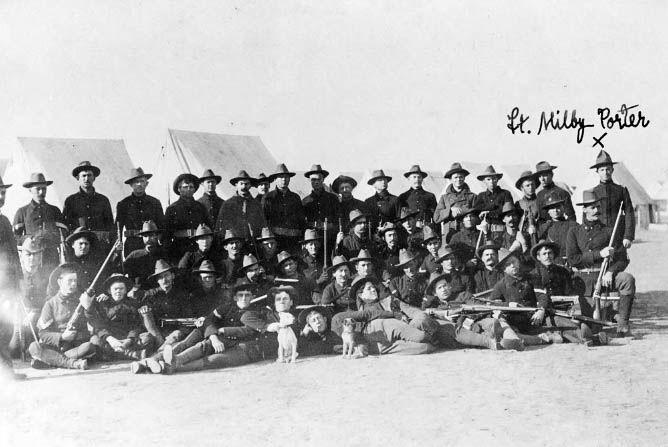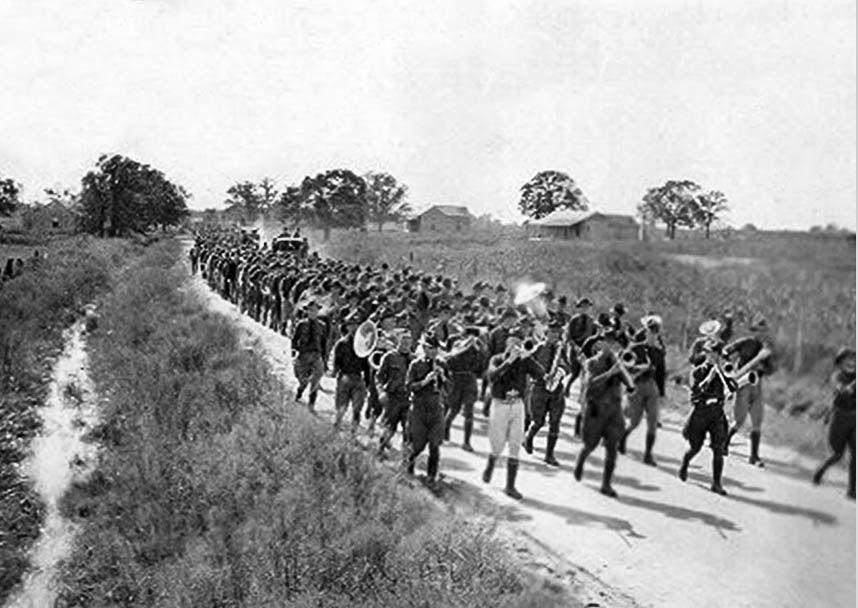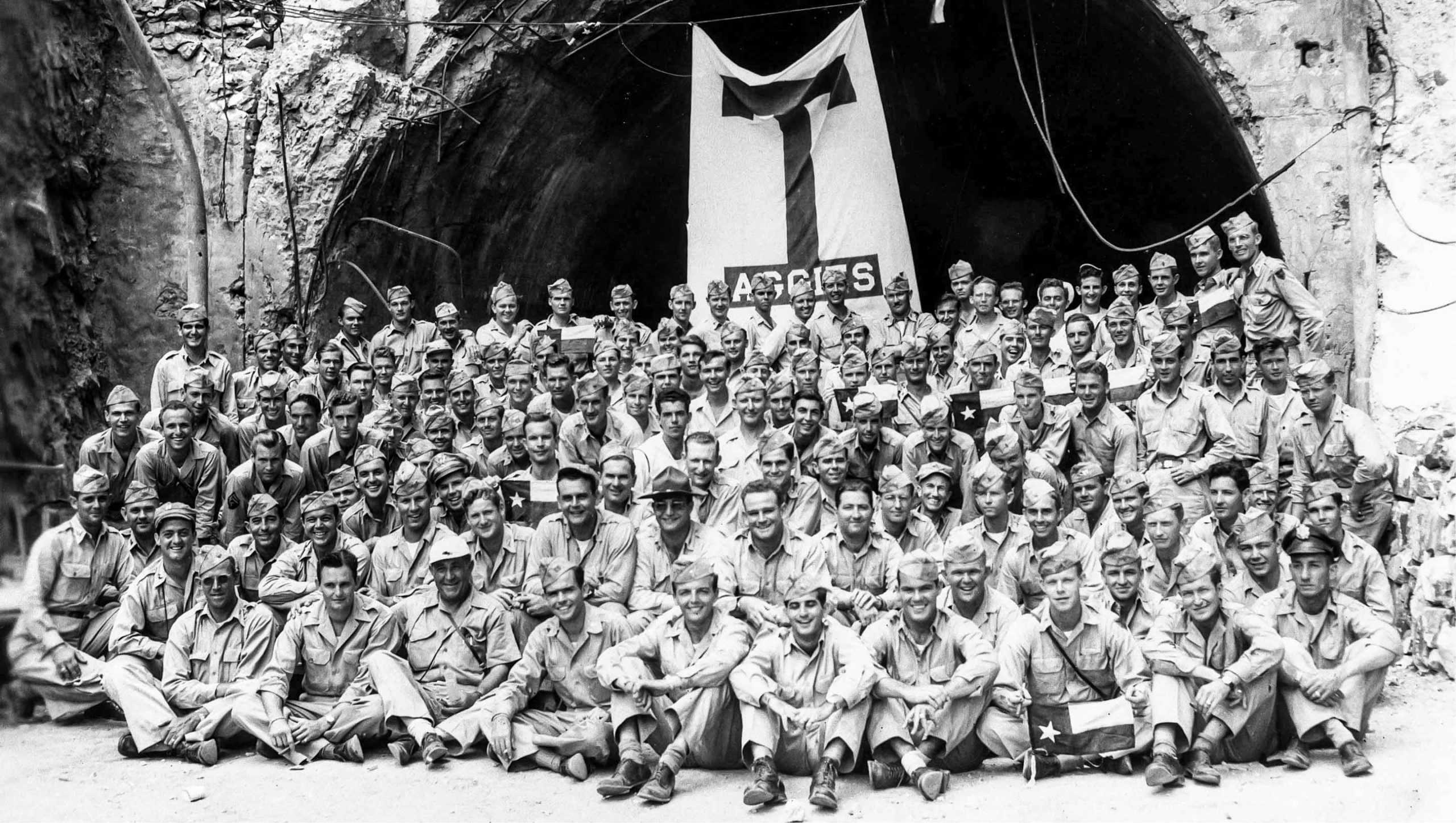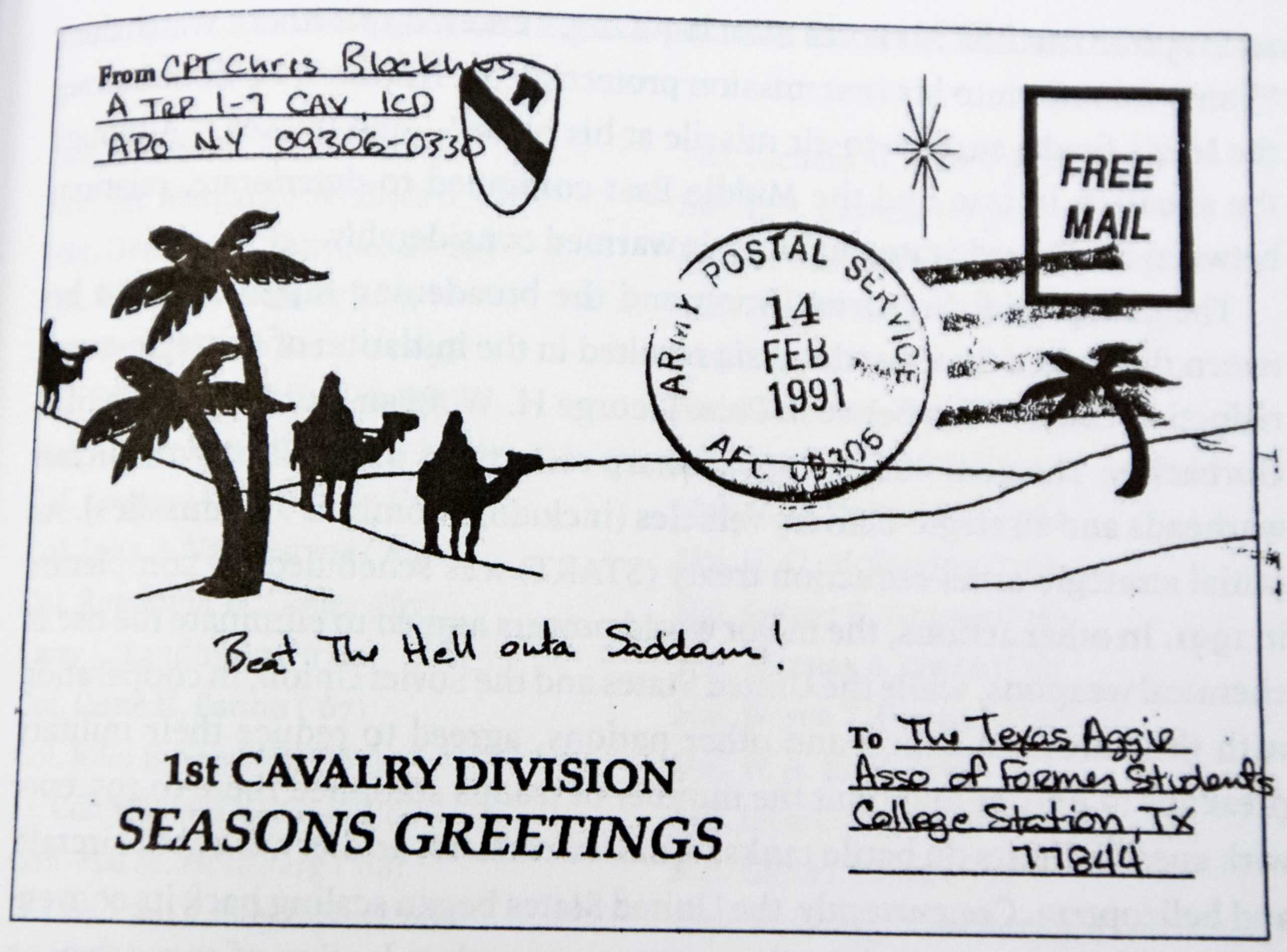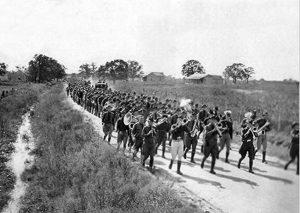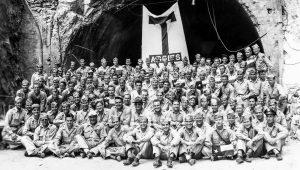During the Civil War, President Lincoln signed the Morrill Act, opening the door for states to establish land-grant colleges using funding from federal land sales.
This laid the groundwork for Texas A&M to be established as the Agricultural and Mechanical College of Texas in 1876. The Corps of Cadets was initiated as the all-male mandatory military training program for the students. Since then, former Corps members have served in every conflict that the U.S. has engaged in from the Spanish American War to the 21st century wars on terror.
Today, the Corps commissions more officers into the United States Armed Forces than any other college outside the service academies. Since its founding, at least 264 former cadets have served as general flag officers — nine of whom have attained four-star rank. Additionally, seven former cadets have been awarded the Medal of Honor, the nation’s highest military award for valor.
Lisa Kalmus, museum curator at the Sam Houston Sanders Corps of Cadets Center said that as a land grant school, Texas AMC was founded with intentions to be one of the county’s leading military colleges.
Over the course of each conflict, the Corps underwent various structural changes that ultimately made the organization what it is today.
Spanish-American War
April 21, 1898 – Aug. 13, 1898:
One month after the U.S. battleship Maine exploded in Feb. 1898 on its way to Spanish-controlled Havana, cadets requested that then-college president Lafayette Foster give permission to organize a regiment to fight the Spanish colonists in Cuba. The Corps at the time was less than 500 cadets. In 1898, there were 89 Aggies serving in the U.S. Army — 63 as commissioned or non-commissioned officers. After Congress declared war on Spain in April, several Aggies would go on to volunteer for the military campaign. This marked the first time Aggies would be called upon in service to their country.
Facts to Know
-
38 Aggies are known to have served in the war.
World War I
July 28, 1914 – Nov. 11, 1918:
Since the beginning, the Corps of Cadets consisted of a single battalion or regiment, comprised of two to eight companies. With enrollment climbing to about 900 cadets during the war, the Corps was subdivided into two regiments for the first time in 1916. In 1917, professors excused students from classes to enter officer training courses and graduation was held at the training camp. While regular soldiers were off to training camps, the university also trained students in military skills like auto mechanics, radio signaling, surveying and horseshoeing. According to the Texas Historical Association, 49 percent of former students in 1918 were serving in the military with 2,000 Aggies commissioned as officers during the war — more than any other college or service academy.
Facts to Know
-
U.S. joins WWI in 1917.
-
AMC gets the nickname “West Point of the Southwest.”
-
2,217 Aggies served in the war.
-
984 served as enlisted personnel in the war.
-
1,233 served as officers in the war.
-
62 Aggies died in the course of the war.
World War II
Sept. 1, 1939 – Sept. 2, 1945:
The need for military officers during the conflict led to another major expansion of the Corps to over 6,500 cadets. In 1942, the Corps consisted of an all-time high of seven regiments of 17 battalions with 60 companies in all, including the Aggie Band. Over this time, A&M produced 20,229 service members, of which 14,123 served as officers. This was more than any other university, including the combined sum of the U.S. Military Academy and the U.S. Naval Academy. To accommodate this demand, the school year was reorganized into three semesters instead of two, reducing the expected graduation time to about two and a half years.
By 1943, the number of cadets leaving school to join the military increased and enrollment dropped to less than 4,000 cadets. In 1944, enrollment dropped as low as 1,600. The Corps had to restructure back down to only two regiments consisting of 17 companies in total.
“[In] World War II… everything starts ramping up much quicker,” Kalmus said. “But students and faculty were all being called up. It was so tremendous. It was on a scale that we can’t comprehend the numbers that were being called up all the time.”
The end of the Second World War brought the college replenished enrollment levels with 1,500 freshmen in 1947. Some veterans of the war, who were former cadets, returned to complete or advance their education further. There were numerous hazing incidents involving the freshmen and some of these older students.
These developments, combined with overcrowding issues, compelled the university to move all the freshman cadets to the reconverted Bryan Air Force Base Riverside Campus Annex, which is now the Texas A&M University RELLIS Campus.
Since the freshmen were bussed to class each day, they trained themselves in precision rifle drill in order to pass the time. They formed the Freshman Drill Team — which later became the nationally-renowned Fish Drill Team.
With a growing population of returning veterans at the college, additional Corps units were instituted, further separating the veterans from younger cadets. The Corps today still retains veteran companies.
Facts to Know
-
U.S. enters WWII in 1941.
-
20,229 Aggies served.
-
6,106 served as enlisted personnel.
-
14,123 served as commissioned officers.
-
29 Aggies attained the rank of general.
-
Gen. James Earl Rudder, Class of 1932, led the Ranger platoons that stormed the beaches of Normandy on D-Day.
-
953 Aggies died.
-
7 Aggies were awarded the Medal of Honor (5 posthumously).
Korean War
June 25, 1950 – July 27, 1953:
The Korean War served as further evidence of the rise of air power in warfare. With the dissolution of the U.S. Army Air Forces into the U.S. Air Force, Corps units previously associated with the Army Air Corps transformed into Air Force flights and subsequently into squadrons.
Later on in 1954, the Corps began to abandon the Army Branch designations of Infantry, Field Artillery, Cavalry, Engineers, Coast Artillery, Quartermaster, Ordnance, Signal Corps, Armor, Chemical Corps, Transportation and Army Security. They adopted the Army, Air Force and Band regiment/wing structure, which was the predecessor to the current Service Branch and Band organization.
Kalmus quoted her father-in-law, Robert Lee Smith, industrial engineering major from the Class of 1951, who served as a cartographer in Alaska during the Korean War: “[Soldiers from Westpoint] got the press, but senior officers knew that Aggies were the ones to get the job done.”
Many Aggies ended up serving in Korea and elsewhere afterward as America’s Cold War with Soviet Russia continued to ratchet up.
Facts to Know
-
1,900 Aggies served.
-
58 Aggies died.
-
6 Aggies still missing in action from the conflict.
-
7 Aggies were awarded the Silver Star — third-highest military award for valor.
Vietnam War
November 1, 1955 – April 30, 1975:
As the Vietnam War raged on, the Corps was again organized into several new Army brigades (previously regiments), Air Force wings and the Aggie Band. The war would take a toll on the nation and A&M especially with Aggies having more second lieutenants as casualties than any other university.
The Vietnam era brought several other changes. From 1963 to 1965, A&M began admitting women and African-Americans, and participation in the Corps became voluntary. Women gained admission into the Corps in 1974 but were segregated into a special unit called W-1.
“For the most part the campus was insulated from any anti-military feeling during Vietnam just because of the size,” Kalmus said. “The change in non-compulsory corps came from basically the academic outlook and maintaining the school, not as a response to the environment.”
Facts to Know
-
Over 3,985 Aggies served.
-
161 Aggies died.
Gulf War
Aug. 2, 1990 – Feb. 28, 1991:
In the fall of 1990, there was an integration of outfits and female-only outfits went away to allow the Corps to be more reflective of the workplace.
The Corps Center opened in 1992 to display the history of the Corps through artifacts and exhibits.
Facts to Know
-
Over 300 Aggies served.
-
Three Aggies died.
Global War on Terror
Sept. 11, 2001 – present:
Currently, the Corps is composed of 38 companies and squadrons — typically referred to as outfits — in addition to the Fightin’ Texas Aggie Band. Thirty-six outfits are divided according to military branch among nine major units — three Army brigades, three Navy and Marine Corps regiments and three Air Force wings — with two special Corps outfits: a combat veterans company and one for off-campus cadets.
Aggies continue to fight in the global war on terrorism as the conflict continues into its 18th year.
Facts to Know
-
As of Feb. 2019, 30 Aggies have died in service since the Sept. 11 attacks.
Editor’s Note: Information for this article was gathered primarily from “Texas Aggies Go to War: In Service of Their Country” by Henry Dethloff and John A. Adams, Jr. and “Keepers of the Spirit: The Corps of Cadets at Texas A&M University, 1876-2001” by John A. Adams, Jr. Additional information came from MyAggieNation.com and KoreanWar.org.
Photos in this article are from “Texas Aggies go to War: In Service of their Country” by Henry C. Dethloff. Used with permission from the Texas A&M University Press.
All service member, missing and death totals in this article reflect the best available information at time of writing. They are subject to future revision.

















